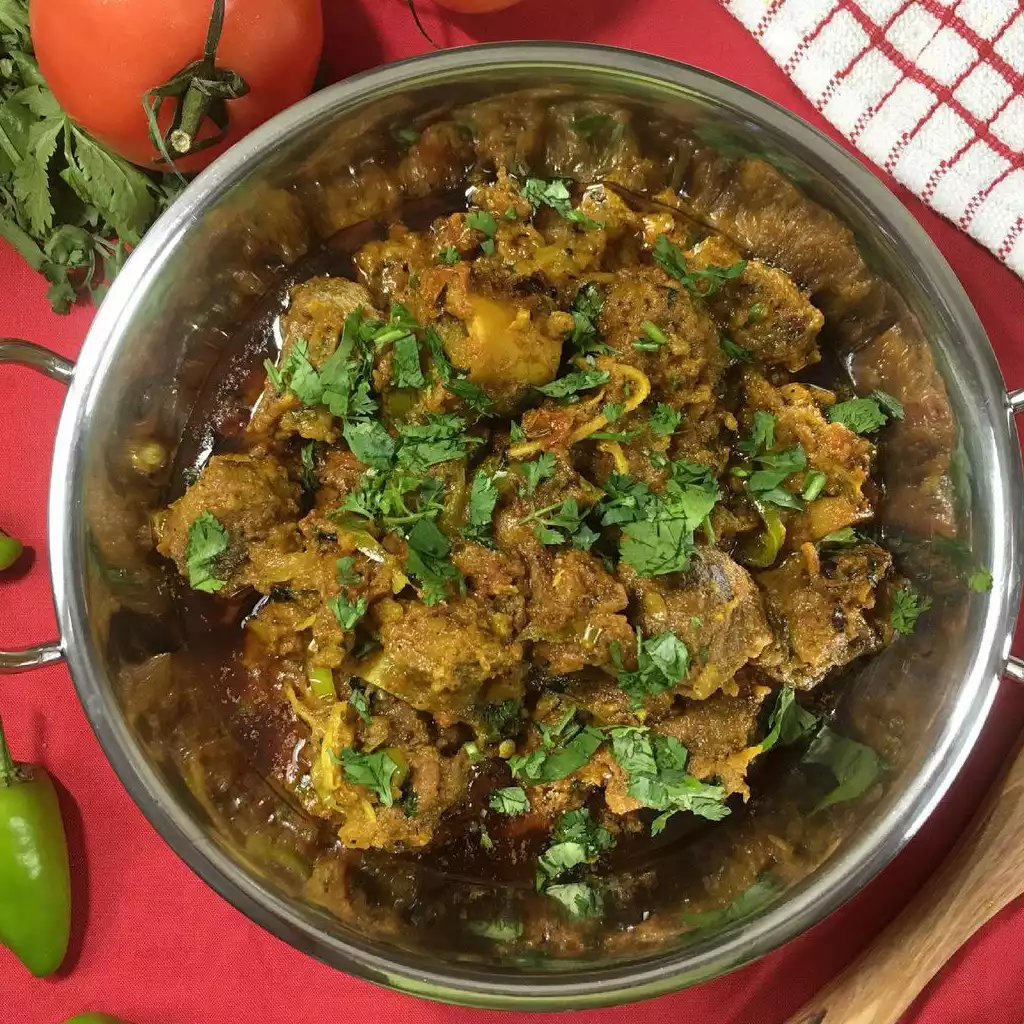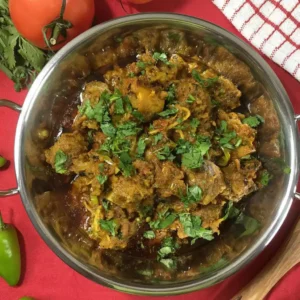
Lamb Karahi is a beloved dish originating from the vibrant culinary landscape of South Asia. This recipe is a testament to the rich flavors and aromatic spices that characterize Pakistani and Indian cuisine.
Traditionally cooked in a wok-like vessel called a “karahi,” this dish boasts tender pieces of lamb simmered in a flavorful blend of spices and aromatics.
The origins of Lamb Karahi can be traced back to the Indian subcontinent, where it has been enjoyed for generations. Its name, “karahi,” refers to the utensil in which it is traditionally cooked, adding to its cultural significance.
Despite its roots, Lamb Karahi has gained popularity worldwide for its bold flavors and comforting appeal.
While the recipe may seem complex at first glance, fear not! With a bit of patience and the right ingredients, you’ll be able to recreate this culinary masterpiece in your own kitchen. This recipe is suitable for beginners eager to explore the world of South Asian cuisine.
Expert Tip: Ensure that the lamb is cut into evenly sized pieces to ensure uniform cooking. This will help prevent some pieces from becoming overcooked while others remain undercooked.
Lamb: Tender pieces of lamb provide a rich and hearty flavor. The lamb is cooked to perfection, becoming succulent and tender as it simmers in the aromatic spices.
Onions: Finely sliced onions add sweetness and depth to the dish as they caramelize in the olive oil. They provide a flavorful base for the other ingredients to build upon.
Tomatoes: Fresh tomatoes are chopped and added to the lamb, lending a subtle sweetness and acidity to balance the spices. They also contribute to the rich texture of the dish as they break down during cooking.
Yoghurt: Yoghurt adds a creamy and tangy element to the Lamb Karahi, complementing the bold spices and adding richness to the sauce. When added correctly, it helps to tenderize the meat and create a velvety texture.
Spices: A blend of aromatic spices including chilli powder, turmeric powder, ginger paste, garlic paste, black pepper, garam masala, and cumin powder infuses the dish with layers of flavor and complexity. Each spice contributes its unique aroma and taste, creating a harmonious balance in the final dish.
Dried Fenugreek Leaves (Methi): Dried fenugreek leaves add a subtle bitterness and earthy flavor to the Lamb Karahi. They enhance the overall aroma of the dish and lend a distinctively savory note.
Olive Oil: Olive oil is used for cooking the onions and lamb, imparting its fruity and slightly peppery flavor to the dish. It also helps to create a rich and luscious sauce for the Lamb Karahi.
Expert Tip: When adding yoghurt to the dish, be sure to stir it immediately and continuously to prevent it from curdling. This will help maintain a smooth and creamy texture in the sauce.
Expert Tip: Experiment with different spice blends and proportions to customize the flavor of your Lamb Karahi. Don’t be afraid to adjust the spices according to your personal taste preferences.
Lamb Karahi can vary in spiciness depending on personal preference and the amount of chilli powder used. However, it typically has a moderate level of heat that is balanced by the other spices and ingredients in the dish.
Yes, you can easily adjust the spiciness of Lamb Karahi to suit your taste. If you prefer a milder dish, simply reduce the amount of chilli powder used or omit the bullet chillies altogether. Conversely, if you like it hotter, you can increase the amount of chilli powder or add extra fresh green chillies.
Absolutely! While Lamb Karahi traditionally features lamb, you can substitute it with other meats such as chicken, beef, or even goat. Just adjust the cooking time accordingly based on the type of meat you choose.
While using a karahi or wok is traditional and adds to the authenticity of the dish, you can still achieve delicious results using a regular skillet or frying pan. The most important thing is to ensure even cooking and proper seasoning of the ingredients.
Yes, Lamb Karahi can be made in advance and reheated before serving. In fact, many people believe that the flavors of the dish deepen and intensify after sitting for a while. Simply store it in an airtight container in the refrigerator and reheat gently on the stove or in the microwave before serving.
Here are some more recipes for you to enjoy! If you my recipes don’t forget to rate and leave a comment.
If you have any recipe suggestions, please do not hesitate to ask me. A great way to stay in contact with me is through Instagram, Facebook, Twitter and YouTube. Don’t forget to tag me @CookwithNabeela in your recipe photos!

Subscribe now to receive my latest recipes directly in your inbox. Stay up-to-date and never miss out!

I love to cook! I want to share with you my favourite, delicious family-friendly recipes. I want to inspire you to create fantastic food for your family every day.
Latest comments (2)
Do you use goat for this. I know it says lamb but a lot of Asian countries call goat lamb or mutton. I do love goat. More than lamb.
Yes, you can use goat but it isn’t as common in the UK. Goat does taste better but lamb is the easier option.😊